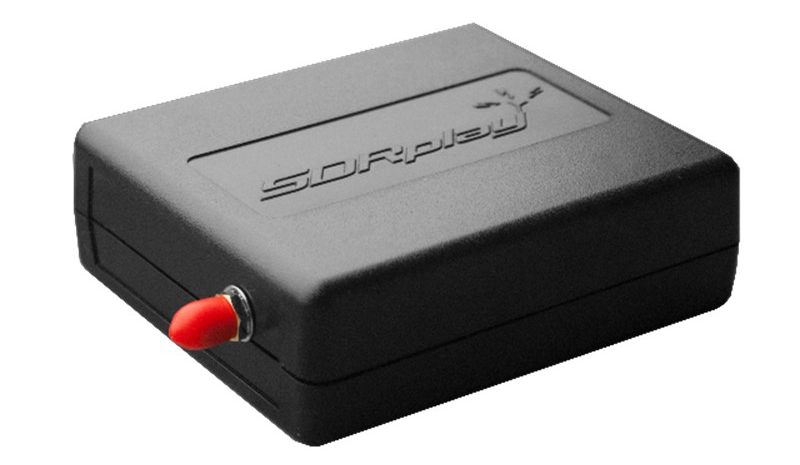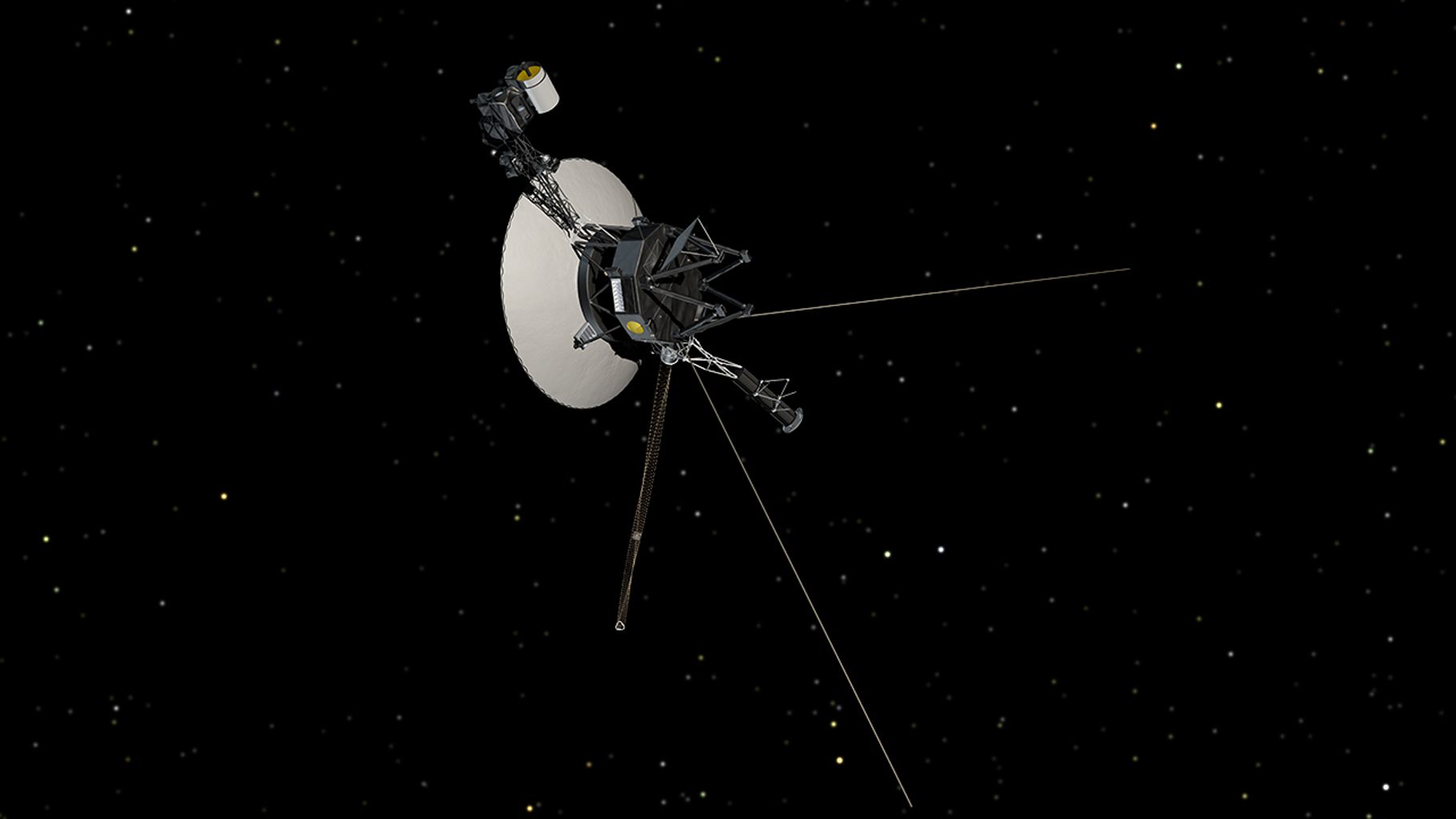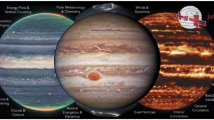- Thursday, 24 October 2024


Planetary Radio Astronomy (PRA)
NSSDCA ID: 1977-076A-10
Description
This experiment consisted of a sweep-frequency radio receiver operating in both polarization states, between 20 kHz and 40.5 MHz. The signal was received by a pair of orthogonal 10-m monopole antennas. The physics of magnetospheric plasma resonances and of nonthermal radio emissions from these planetary regions was studied by investigation of the radio emission signals from Jupiter and Saturn over this range of frequencies, and similar studies will be done at Uranus and Neptune.
Alternate Names
- Voyager2/PRA
- urn:nasa:pds:context:instrument:vg2.pra
Facts in Brief
Mass: 7.7 kg Power (avg): 5.5 W Bit rate (avg): 0.266 kbps
Funding Agency
- NASA-Office of Space Science (United States)
Disciplines
- Planetary Science: Fields and Particles
- Astronomy: Radio
Additional Information
- Data collections from this experiment
Questions and comments about this experiment can be directed to: Dr. Edwin V. Bell, II Personnel
Selected references.
- Warwick, J. W., et al. , Planetary radio astronomy experiment for Voyager missions, Space Sci. Rev. , 21, No. 3, 309-327, doi:10.1007/BF00211544, Dec. 1977.
NSSDCA Master Catalog Search
- Experiments
- Data Collections
- Publications
- New/Updated Data
- Lunar/Planetary Events
- + Privacy Policy and Important Notices
- NASA Official: Dr. David R. Williams
- Curator: E. Bell, II
- Version 5.1.15, 28 October 2022
The Radio JOVE Project
Solar & planetary radio astronomy ☉ please join us here ♃, hints for rjers.
Radio-Sky Spectrograph
The Radio-Sky Spectrograph software, RSS, ( https://www.radiosky.com/specdownload.html ) is the preferred spectrograph recording & display software for Radio JOVE. The latest installation update of RSS (Version 2.9.63) is available at: http://radiosky.com/spec/Spectrograph_2_9_63.exe

Announcement
SDR-based Radio Telescope Kits are here!

Read the March 2022 Special Issue of the Radio JOVE Bulletin for more information.
From the JOVE Bulletin
Video: Historic Maryland — Jupiter Radio Emissions

Historical Note
20+ Years of Radio JOVE: 1999–2019
The Radio JOVE Project turned 20 years-old in 2019! Here's remembering all those who have made the project go over the years, some who are, sadly, no longer with us. Thank you to all those who support and participate in Radio JOVE.

Watch live-streamed Radio JOVE data on YouTube!
Radio JOVE team member Larry Dodd live-streams his radio spectrograph data and audio on YouTube. The spectrograph data come from an SDRplay receiver operating over the 16–24 MHz frequency range. The audio is streamed from an original Radio JOVE receiver tuned to 20.1 MHz. See and hear his live data here: https://youtube.com/channel/UCtawz3MnMBwjz9ShhSC0ygQ/live .
Welcome to Radio JOVE!

What's New: Training Modules - The Radio JOVE project in partnership with the SunRISE Ground Radio Lab have produced a series of training modules about radio astronomy and using your Radio JOVE system. » See more Radio JOVE news -->
Observer's Corner
23 April 2024 was a busy day for solar emission. Dave Typinski at AJ4CO Observatory, Florida, USA recorded this spectrogram using an FSX spectrograph fed by two 24 foot long TFD (Terminated Folded Dipole) antennas arranged similar to a Radio JOVE dual dipole array.
We see here some Solar Type III bursts at 1735 UTC, followed by a radio blackout from an M2.9 Class X-ray flare peaking at 1745 UTC, followed by a Type II radio burst from 1750 to 1815 UTC, followed by a couple of Type III bursts at 1825 and 1843 UTC.

Voyager 2 Detects Intense Radio Emissions

NASA's Voyager 2 spacecraft has detected intense radio emissions from Neptune, indicating that the planet has magnetic field.
The discovery, made by Voyager 2's planetary radio astronomy instrument team at NASA's Jet Propulsion Laboratory, Pasadena, Calif., greatly increases the likelihood that the spacecraft will discover wide range of interesting phenomena related to magnetic field, such as aurora and possible radiation-darkened ring arcs and moons around Neptune.
Voyager 2 will come within 4,850 kilometers (3,000 miles) of Neptune at 9 p.m. on Aug. 24.
The emissions are generated around planets by high-velocity, charged particles as they spiral along magnetic field lines into the planet's atmosphere.
At Neptune, "the radio emissions are very intense, very impulsive, and occur in limited range of frequency," said Dr. James Warwick, principal investigator on the planetary radio astronomy experiment. The emissions, he added, are polarized, "so we know we're dealing with magnetic field. The source is not lightning; it is related to energetic particles interacting in magnetic field."
A planetary magnetic field is girdle of magnetic field lines that surround planet. Such fields are thought to be generated by fluid motion in planet's core (molten iron in Earth's core, for example). Mercury, Earth, Jupiter, Saturn and Uranus have magnetic fields, while Venus and Mars do not. Whether Pluto has one or not is not known.
While the Neptunian radio emissions were only confirmed today, Warwick said that in looking back over Voyager data, the emissions were heard by the planetary radio astronomy instrument as early as Aug. 14. The emissions weren't immediately recognized as being associated with Neptune, however, because their character "was so different from what we were expecting," Warwick said.
As more data from the instrument is returned to Earth over coming days, Warwick's team will be able to precisely define Neptune's rotation -- the length of its day.
Early analysis indicates that Neptune's magnetic field is of an intensity similar to the magnetic fields of Earth and Uranus.
Voyager 2's close flyby over Neptune's northern hemisphere will allow the spacecraft's complement of instruments to determine Neptune's magnetic field structure and orientation.
The Voyager Mission is conducted for NASA's Office of Space Science by the Jet Propulsion Laboratory.
Planetary radio astronomy experiment for Voyager missions
- Published: December 1977
- Volume 21 , pages 309–327, ( 1977 )
Cite this article

- J. W. Warwick 1 ,
- J. B. Pearce 1 ,
- R. G. Peltzer 1 &
- A. C. Riddle 1
149 Accesses
119 Citations
3 Altmetric
Explore all metrics
The planetary radio astronomy experiment will measure radio spectra of planetary emissions in the range 1.2 kHz to 40.5 MHz. These emissions result from wave-particle-plasma interactions in the magnetospheres and ionospheres of the planets. At Jupiter, they are strongly modulated by the Galilean satellite Io.
As the spacecraft leave the Earth's vicinity, we will observe terrestrial kilometric radiation, and for the first time, determine its polarization (RH and LH power separately). At the giant planets, the source of radio emission at low frequencies is not understood, but will be defined through comparison of the radio emission data with other particles and fields experiments aboard Voyager, as well as with optical data. Since, for Jupiter, as for the Earth, the radio data quite probably relate to particle precipitation, and to magnetic field strength and orientation in the polar ionosphere, we hope to be able to elucidate some characteristics of Jupiter auroras.
Together with the plasma wave experiment, and possibly several optical experiments, our data can demonstrate the existence of lightning on the giant planets and on the satellite Titan, should it exist. Finally, the Voyager missions occur near maximum of the sunspot cycle. Solar outburst types can be identified through the radio measurements; when the spacecraft are on the opposite side of the Sun from the Earth we can identify solar flare-related events otherwise invisible on the Earth.
This is a preview of subscription content, log in via an institution to check access.
Access this article
Subscribe and save.
- Get 10 units per month
- Download Article/Chapter or eBook
- 1 Unit = 1 Article or 1 Chapter
- Cancel anytime
Price includes VAT (Russian Federation)
Instant access to the full article PDF.
Rent this article via DeepDyve
Institutional subscriptions
Similar content being viewed by others

Jupiter Science Enabled by ESA’s Jupiter Icy Moons Explorer

Radio Observations as an Exoplanet Discovery Method

Acuña, M. H. and Ness, N. F.: 1976, in T. Gehrels (ed.), Jupiter , University of Arizona Press, Tucson, p. 836.
Google Scholar
Brown, L. W.: 1974, Astrophys. J. 194 , L159.
Brown, L. W.: 1975, Astrophys. J. 198 , L89.
Carr, T. D. and Desch, M. D.: 1976, in T. Gehrels (ed.), Jupiter , University of Arizona Press, Tucson, p. 693.
Franklin, K. L. and Burke, B. F.: 1958, J. Geophys. Res. 63 , 807.
Gledhill, J. A.: 1967, Nature , 214 , 155.
Goldreich, P. and Lynden-Bell, D.: 1969, Astrophys. J. 156 , 59.
Gurnett, D. A.: 1972, Astrophys. J. 175 , 525.
Gurnett, D. A.: 1976, in B. M. McCormac (ed.), Magnetospheric Particles and Fields , D. Reidel, Dordrecht, Holland, p. 197.
Kaiser, M. L. and Stone, R. G.: 1975, Science , 189 , 285.
Kaiser, M. L.: 1977, Astrophys. J. in press.
Kurth, W. S., Baumback, M. M., and Gurnett, D. A.: 1975, J. Geophys. Res. 80 , 2764.
Lang, G. J. and Peltzer, R. G.: 1977, Planetary Radio Astronomy Receiver, IEEE Transactions on Aerospace and Electronics Systems , submitted for publication.
Malkus, W. V. R.: 1963, J. Geophys. Res. 68 , 2871.
Malkus, W. V. R.: 1968, Science , 160 , 259.
Ratner, M. L.: 1976, ‘Very-Long Baseline Observations of Jupiter's Millisecond Radio Bursts’, Thesis, Boulder: University of Colorado, unpublished.
Rochester, M. G., Jacobs, J. A., Smylie, D. E., and Chong, K. F.: 1975, Geophys. J. Roy. Astron. Soc. 43 , 661.
Smith, E. J., Davis, L., Jr., and Jones, D. E.: 1976, in T. Gehrels (ed.), Jupiter , University of Arizona Press, Tucson, p. 806.
Warwick, J. W.: 1976, in B. M. McCormac (ed.), Magnetospheric Particles and Fields , D. Reidel, Dordrecht, Holland, p. 291.
Download references
Author information
Authors and affiliations.
Department of Astro-Geophysics, University of Colorado, 80309, Boulder, CO, USA
J. W. Warwick, J. B. Pearce, R. G. Peltzer & A. C. Riddle
You can also search for this author in PubMed Google Scholar
Rights and permissions
Reprints and permissions
About this article
Warwick, J.W., Pearce, J.B., Peltzer, R.G. et al. Planetary radio astronomy experiment for Voyager missions. Space Sci Rev 21 , 309–327 (1977). https://doi.org/10.1007/BF00211544
Download citation
Received : 24 May 1977
Issue Date : December 1977
DOI : https://doi.org/10.1007/BF00211544
Share this article
Anyone you share the following link with will be able to read this content:
Sorry, a shareable link is not currently available for this article.
Provided by the Springer Nature SharedIt content-sharing initiative
- Magnetic Field Strength
- Radio Emission
- Plasma Wave
- Particle Precipitation
- Radio Spectrum
- Find a journal
- Publish with us
- Track your research

IMAGES
VIDEO
COMMENTS
The Planetary Radio Astronomy and Plasma Wave Subsystem and the Planetary Radio Astronomy experiment share the two long antennas which stretch at right-angles to one another, forming a "V". The PRA receiver covers two frequency bands, from 20.4 kHz to 1300 kHz and from 2.3 MHz to 40.5 MHz.
Study of the radio-emission signals from Jupiter and Saturn over this range of frequencies yielded data concerning the physics of magnetospheric plasma resonances and nonthermal radio emissions from these planetary regions.
The physics of magnetospheric plasma resonances and of nonthermal radio emissions from these planetary regions was studied by investigation of the radio emission signals from Jupiter and Saturn over this range of frequencies, and similar studies will be done at Uranus and Neptune.
Radio JOVE students and amateur scientists from around the world observe and analyze natural radio emissions of Jupiter, the Sun, and our galaxy using their own easy to construct radio telescopes.
The Voyager 1 planetary radio astronomy experiment detected two distinct kinds of radio emissions from Saturn. The first, Saturn kilometric radiation, is strongly polarized, bursty, tightly correla...
The Voyager 2 Planetary Radio Astronomy experiment to Jupiter has confirmed and extended to higher zenomagnetic latitudes results from the identical experiment carried by Voyager 1.
The objective of this experiment is to observe short-wave radio emissions from the giant planets. Only one is known at present to produce these emissions, although that single case is extraordifiary. Jupiter was pre-dicted to be a radio source by Velikovsky (Worlds in Collision, Doubleday, New York) in 1950.
NASA’s Voyager 2 spacecraft has detected intense radio emissions from Neptune, indicating that the planet has magnetic field. The discovery, made by Voyager 2’s planetary radio astronomy instrument team at NASA’s Jet Propulsion Laboratory, Pasadena, Calif., greatly increases the likelihood that the spacecraft will discover wide range of ...
This article reports on the activities of the Deep Space Network in support of Radio and Radar Astronomy operations during July and August 1980. A brief update on the aSS-sponsored Planetary Radio Astronomy experiment is provided. Also included are
The planetary radio astronomy experiment will measure radio spectra of planetary emissions in the range 1.2 kHz to 40.5 MHz. These emissions result from wave-particle-plasma interactions in the magnetospheres and ionospheres of the planets.